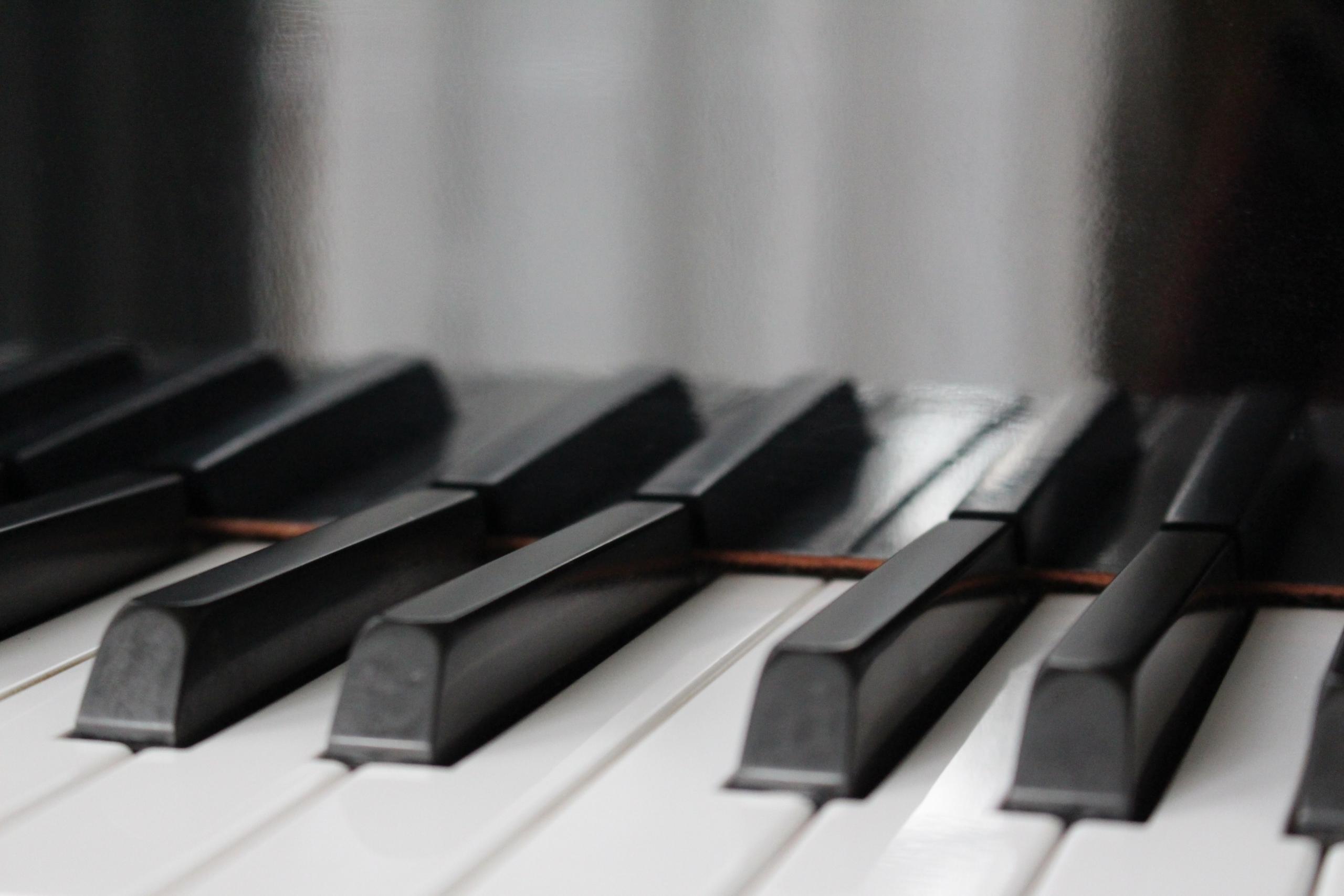I had piano lessons when I was younger, but I quit because I didn't want to sit and learn scales. Conor Maynard
If your child is a beginner piano player, there are 4 simple steps that will help them succeed at the beginning of their piano learning journey. For starters, unlike Conor Maynard, your child has to get to grips with piano scales. The right piano technique does actually come with piano scales practice. This article focuses on the 4 steps to help beginner piano students to learn the piano scales.
To understand why learning piano scales is so important, remember that when you know the piano scales, you know the piano keys. When you know the piano keys, you automatically play the piano better.
Ask any professional piano instructor and he or she will tell you that getting to grips with piano scales changes everything. The learning of piano scales is known as solfeggio. In other words, solfeggio helps you understand the feeling associated with each sound that you hear being played when you press the keys on the keyboard.
Since this does sound slightly overwhelming, we will break down the concept of piano scales into four pieces of advice.
Want to give private lessons?
Join the Superprof community and share your knowledge with inquiring and motivated students.
What is a Piano Scale?
Rome was not built in a day. So, no piano student should even expect to master the piano after just a few music classes. Learning how to play a musical instrument is no easy feat.
Like academic classes that you may take, you’ll have to work hard and practise if you really want to learn to play the piano. The best tip would be to begin with basic piano songs and find that middle C before advancing to harder songs.
To become more advanced, you must stay motivated. Discipline will force you to work harder and advance your piano skills faster.
In music theory, a scale is a series of musical tones – minor or major – going up or down in pitch in fixed steps. A scale that rises in pitch is an ascending scale and one that lessens in pitch is a descending scale.
This gets somewhat complicated as you learn how to play the piano.

If you take the middle C scale, for instance, it includes seven notes, plus the higher octave: c-d-e-f-g-a-b-c. The C major scale includes six pitches or note intervals (the space between each piano key).
A pitch or key corresponds to the passage between two white keys on the piano keyboard, a half-pitch represents the movement from a white key to a black key, which will mean either a sharp or a flat. So the scale of C can also be understood as: pitch, pitch, half-pitch, pitch, pitch, pitch, half-pitch.
To play the piano you need to be able to measure the distance between notes, like in a mathematical calculation.
When playing the piano, each time that you change from one piano key to the next, count a half-pitch or key higher or lower. At that’s why, on the keyboard, there is just a half-key between the E and the F, or between the B and the C.
Now, in harmony, the intervals in the scale of C major are:
- The tonic (c, first degree),
- The second (d, second degree),
- The third (e, third degree),
- The fourth (f, fourth degree),
- The fifth (g, fifth degree),
- The sixth (a, sixth degree),
- The seventh (b, seventh degree),
- The octave (c).
Thanks to these basic solfege related concepts, you will be able to play major and minor scales on your piano keyboard.
What Are Major Scales and Minor Scales?
For the beginner pianist, this question might seem hard to answer. But, the truth of matter remains, it's simply a question of different sonorities.
Certain scales are called major scales and others are minor scales – the way the scales are named depends entirely on the different note intervals, the way in which you divide the keys and half-keys in an octave.

To keep this simple, remember that a minor scale gives you somewhat of a nostalgic coloring to the piano piece and melody. A major scale is quite the opposite, it is more upbeat.
Everything You Need to Know About Major Scales
The C-major scale is the first modern major scale, known in ancient times as the Ionian Mode.
To play a major scale on the piano, you just need to follow one fundamental rule. You must always respect the interval of the following major mode: key, key, half-key, key, key, key, half-key. So, to play a scale of C major, you have to play: c-d-e-f-g-a-b-c.
You’ll need to transpose it for these other major scales:
- Scale of D major: d-e-f#-g-a-b-c#-d,
- Scale of E major: e-f#-g#-a-b-c#-d#-e,
- Scale of F major: f-g-a-b-c-d-e-f.
And this continues as such for each tonic. To help you understand this better, we recommend you download a major scale chart.
Everything You Need to Know About Minor Scales
The natural minor mode resonates with the ancient mode of A, or Aeolian mode. It has a more melancholic feel.
The scale of A minor is different from the scale of C major.
Little by little, a half-pitch is introduced between the seventh and the eighth note of the scale – the leading tone – in order to imitate the mode of C major, and this creates the minor harmonic scale!
For example, the note B is the leading tone – the note of the seventh degree – of the C major and C minor scales. Then, the progression to the sixth degree – the key of A flat – to the seventh degree – the key of B – gives a nostalgic ring to the C minor scale.
Remember, for each major scale, there is a corresponding minor scale.
If all this piano jargon seems hard to grasp, you may question if it is really easy to learn to play piano!
Learn All Piano Scales in These Steps
If you are keen on learning to play the piano and mastering piano scales, you have to work hard to do so.
Here are several handy steps for you to follow in order to play your scales well and make step-by-step progress.
- Play 15 to 20 minutes of scales every day. In order to learn your scales by heart, it’s better to work just 20 minutes a day rather than do everything in one big practice session, in one day only. There are so many – 15 major scales and 15 minor scales –hence you need to tackle them scale by scale. Try your best to master each and every scale before progressing to the next one.
- Perfect your finger technique. Get rid of bad piano-playing habits from the onset. From the time that you start playing the piano, you should adopt the proper finger techniques and finger positioning. (And the proper posture for playing the piano as well)
- Practise the scale of C major, then go on to all the other minor and major scales. The C major key is the simplest key of them all. Start there and play the white keys of the piano (c-d-e-f-g-a-b-c). Doing an ascending scale and a descending scale in C major will not only improve your musical ear, but also help you acquire speed and dexterity once you’ve mastered it.

Once you’ve mastered your scales, you will play the piano better. Soon you will be able to play, Mary Had a Little Lamb on the piano.
Here are some helpful hints for getting to learn how to play the piano faster:
- Watch videos and take online piano lessons (just beware of free piano lessons!)
- Use a metronome.
- Progressively increase your tempo
- Play by heart without reading sheet music
- Add chords with the left hand.
Ready to start taking piano lessons for beginners? Find a professional tutor on Superprof today!
Why Learning Scales is Necessary
Professional piano players and musicians worked hard to get where they are. To become a good pianist and be able to express yourself well on the piano, you ought to memorize your piano scales.
It all boils down to solfege.
Once you study musical theory and concepts, and you know your minor scales and major scales, you will be able to improvise on all types of songs, no matter the music genre. A good musical ear helps as well.
For musicians with a good musical ear and professional piano skills, it takes longer to read sheet music than understand it from listening.
How are your sight-reading abilities? Can you play a song by ear?
Perhaps one of the best reasons for learning musical scales is that it helps with musical composition. Listen to any great musical composer and you will see how much knowing minor and major keys have helped.
We hope you enjoyed the article and are ready to put what you have learnt into practice once you get to your next piano lesson. Are you still looking for somewhere to take piano lessons? Perhaps it's time to consider a Superprof tutor!
Want to give private lessons?
Join the Superprof community and share your knowledge with inquiring and motivated students.





